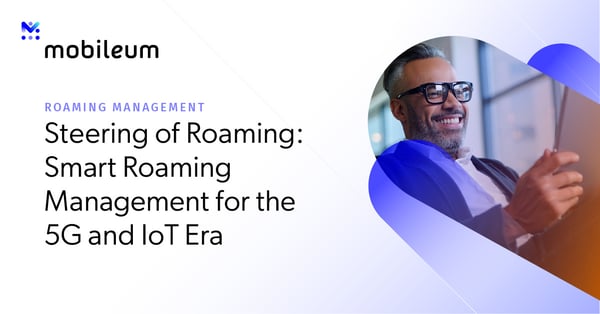International roaming has evolved from a luxury to a necessity. Whether it’s a business executive closing deals overseas, a tourist navigating unfamiliar territory, or a digital nomad managing remote work from abroad, they expect a reliable and seamless mobile connectivity. However, not all roaming experiences are created equal, and delivering a superior roaming experience is now more critical than ever to meet the evolving needs of today’s travelers.
The first impression a subscriber receives upon landing in a new country and connecting to a roaming network is pivotal. Is the connection stable? Are voice calls clear? Is data access immediate, reliable and fast? Any shortcomings in these areas can leave a lasting negative impact, not only on the subscriber’s perception of the foreign network, but also on their home operator’s reputation. Substandard roaming quality can result in dropped calls, sluggish internet speeds, or even complete service outages. Such issues are more than mere inconveniences; for customers who depend on real-time connectivity, particularly enterprise users, they can be business-critical. In developed markets, e.g., the U.S., ARPU for business and enterprise customers, commonly ranges between $80–$90 per user per month for top operators.
Enterprise customers represent one of the most valuable segments for mobile operators. Their productivity and, often, their professional reputation hinge on top-tier service quality. For example, a business traveler unable to join a video call, download important files, or make a critical call due to network issues is not just inconvenienced—they are losing valuable time and, potentially, incurring financial losses. Operators that consistently deliver high-quality international roaming services can distinguish themselves as premium providers in the eyes of enterprise clients.
International roaming remains a significant revenue stream for mobile operators. However, poor service quality can jeopardize this revenue. Customers who encounter problems while roaming are more likely to seek alternatives, such as using local SIM cards, travel eSIMs, or local Wifi. Once they have data access, they can rely on over-the-top (OTT) applications like WhatsApp, which can bypass traditional mobile services. In some cases, dissatisfied customers may even consider switching providers altogether. In a highly competitive market where customer acquisition is costly and loyalty is paramount, ensuring superior roaming quality is a vital retention strategy.
Historically, CSP roaming business teams have relied on Steering of Roaming (SoR) solutions to meet their wholesale business objectives, whether this was commitments towards a particular partner, achieving balance of trade with a given operator group, or maximizing their wholesale margins. These solutions dynamically direct subscribers to preferred partner networks, optimizing network selection to reduce operational costs and maximize roaming revenue and/or margin. Nevertheless, even when a Visited Public Mobile Network (VPMN) generally maintains high overall quality standards, individual roaming subscribers may still encounter service issues, such as congestion or local network faults, that negatively impact their experience.
Modern roaming management increasingly must rely on hyper-segmentation and fine-grained geographical targeting to optimize customer experience. Rather than adopting broad, one-size-fits-all steering strategies, leading operators must consider more nuanced approaches that focus interventions where they are most needed to ensure optimal quality of experience for each individual roamer.
For example, if network analytics reveal that a subset of roamers is experiencing degraded service quality specifically in London due to localized congestion or faults, operators can apply highly targeted steering actions. In this scenario, only those affected users within London can be seamlessly redirected to an alternative, higher-performing partner network. There is no need to extend sweeping changes to all roamers across England, avoiding unnecessary disruption for unaffected subscribers.
Balancing the need to fulfill wholesale commitments with the imperative to deliver exceptional roaming quality presents a significant challenge for operators. To address this, operators must continuously monitor the real-time quality of service experienced by each roaming subscriber, quickly identify and anticipate customer-impacting issues, and seamlessly transition subscribers to the most suitable partner network as needed. Achieving this level of responsiveness requires advanced real-time analytics, artificial intelligence, and machine learning to provide actionable hyper-granular insights to drive steering decisions. Leading operators are leveraging these technologies to proactively monitor and enhance the roaming experience, taking corrective action even before customers become aware of any issues. This proactive approach not only safeguards revenue but also demonstrates customer centricity strengthening the perceived value which ultimately drives customer loyalty and improves operator reputation in the global marketplace.
As the world moves toward 5G, 6G, and beyond, the need for consistent, high-quality roaming will only intensify. New use cases, like autonomous vehicles, IoT devices, and real-time AR/VR applications, will demand ultra-reliable, low-latency connections anywhere in the world. Operators who prioritize and invest in roaming quality today are laying the foundation for capturing tomorrow’s opportunities. In international roaming, quality builds trust, drives revenue, and secures long-term customer loyalty. In a world that never stops moving, seamless and high-quality connectivity is what keeps us all connected, wherever we go.




Let Us Know What You Thought about this Post.
Put your Comment Below.